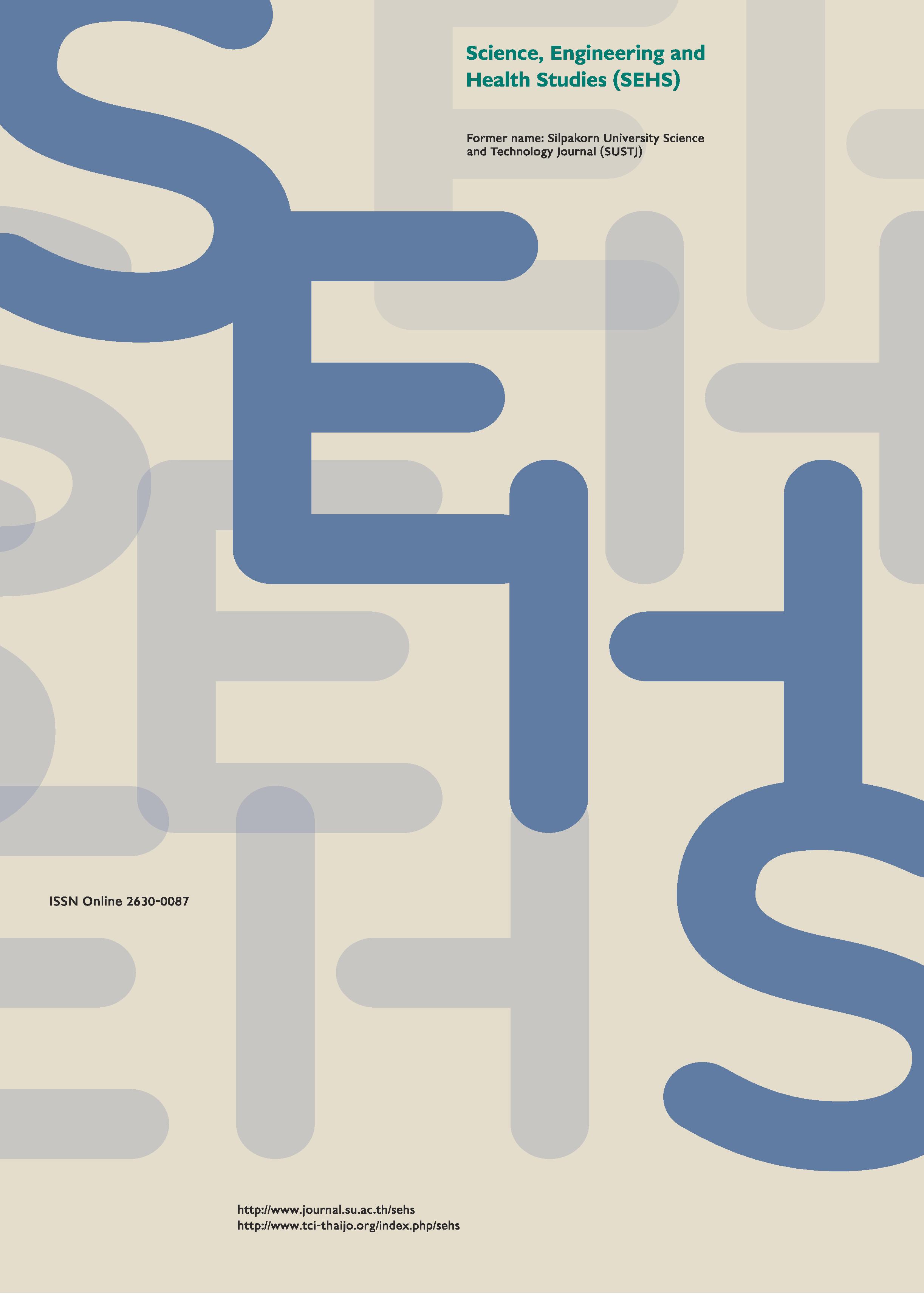Impact of homogeneity of variances violation in single factor components of variance model when sampling from finite population
Main Article Content
Abstract
This study aims to appraise the impact of heteroscedasticity in a single factor component of variance model when random effects are sampled from a finite population. Monte Carlo simulation was conducted to evaluate the performance of the F-statistic in the one-way ANOVA via the type I error rate and power. Results suggest that when the null hypothesis is true, the F-test can generally keep the nominal α of 0.05 even the homogeneity of variances is not satisfied, whereas the empirical type I error rates are far from α = 0.01. Further, the heterogeneity of variances is still a problem in the ANOVA for both terms, i.e., the type I error rate and power even for medium heterogeneity cases. The finite F-test always has greater power than the usual F-test in case in which the heteroscedasticity is presented and the random effects (ti) are sampled from a finite population. This suggests that a large value of a type II error rate may arise when the sampling fraction (k/N) exceeds five percent. Under this condition, one should avoid use of the ordinary F-test in a single factor ANOVA.
Downloads
Article Details
References
Bradley, J. V. (1978). Robustness? The British Journal of Mathematical and Statistical Psychology, 31(2), 144-152.
Cochran, W. G. (1977). Sampling Techniques, 3rd ed., John Wiley & Sons, New York: pp. 25.
Cornfield, J. and Tukey, J. W. (1956). Average values of mean squares in factorials. Annals of Mathematical Statistics, 27, 907-949.
Cribbie, R. A., Wilcox, R. R., Bewell, C., and Keselman, H. J. (2007). Test for treatment group equality when data are nonnormal and heteroscedastic. Journal of Modern Applied Statistical Methods, 6(1), 117-132.
Game, P. A., Winkler, H. B., and Probert, D. A. (1972). Robust tests for homogeneity of variance. Educational and Psychological Measurement, 32, 887-909.
Gaylor, D. W. and Hartwell, T. D. (1969). Expected mean squares for nested classifications. Biometrics, 25, 427-430.
Hartley, H. O. (1967). Expectations, variances and covariances of ANOVA mean squares by synthesis. Biometrics, 23, 105-114.
Hecke, T. V. (2010). Power study of anova versus Kruskal-Wallis test. Journal of Statistics and Management Systems, 15(2-3), 241-247.
Liu, H. (2015). Comparing Welch’s ANOVA, a Kruskal-Wallis Test and Traditional ANOVA in Case of Heterogeneity of Variance (master’s thesis). Virginia Commonwealth University, Richmond, Virginia, United States.
Mahamunulu, D. M. (1963). Sampling variances of the estimates of variance components in the unbalanced 3-way nested classification. Annals of Mathematical Statistics, 34, 521-527.
Moder, K. (2007). How to keep the type I error rate in ANOVA if variances are heteroscedastic. Austrian Journal of Statistics, 36(3), 179-188.
Moder, K. (2010). Alternatives to F-Test in one way ANOVA in case of heterogeneity of variances (a simulation study). Psychological Test and Assessment Modelling, 52(4), 343-353.
Montgomery, D. C. (2013). Design and Analysis of Experiments, 8th ed., John Wiley & Sons, New York, pp. 116-118.
Searle, S. R., Casella, G., and McCulloch, C. E. (2006). Variance Components, John Wiley & Sons, New Jersey, pp. 16-18.
Searle, S. R. and Fawcett, R. F. (1970). Expected mean squares in variance components models having finite populations. Biometrics, 26, 243-254.
Simmachan, T. (2011). Analytical Method for the Random Effects One-Way ANOVA Model when Sampling from a Finite Population (master’s thesis). Thammasat University, Thailand.
Simmachan, T., Borkowski, J. J., and Budsaba, K. (2012). Expected mean squares for the random effects one-way ANOVA model when sampling from a finite population. Thailand Statistician, 10(1), 121-128.
Tukey, J.W. (1956). Variances of variance components: I Balanced designs. Annals of Mathematical Statistics, 27, 722-736.
Tukey, J.W. (1957). Variances of variance components: II The unbalanced single classification. Annals of Mathematical Statistics, 28, 43-56.

